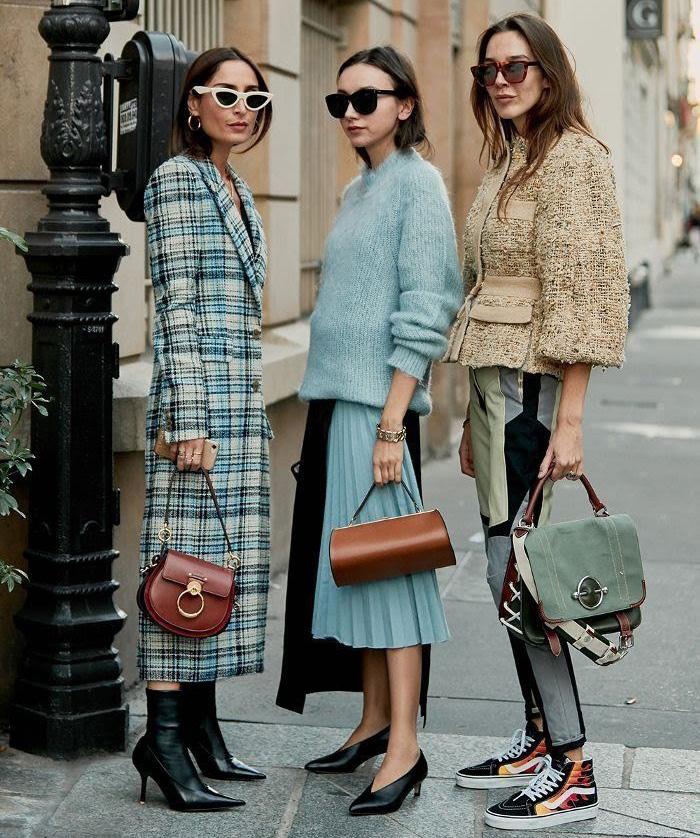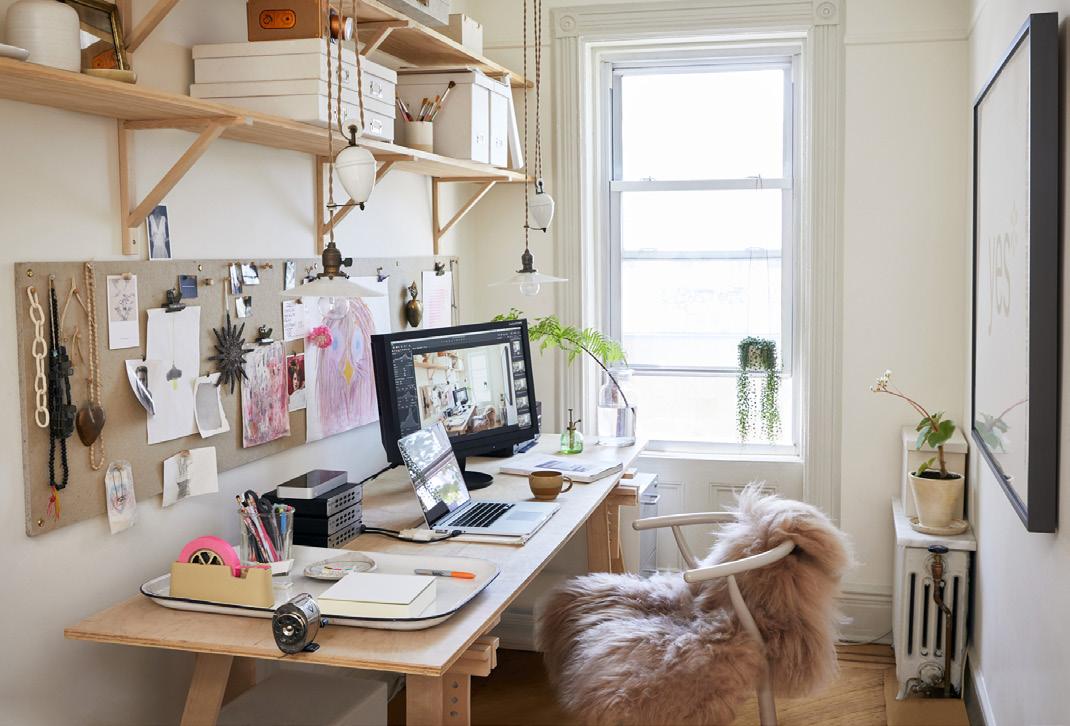
7 minute read
Interview with Fashion Forecaster Jamie Ross
from EIG Magazine
by Levi_eig
by Levi Eig
One of the most important components of the fashion world is its ever-changing nature. Trends can appear and disappear in the blink of an eye, and many have left behind a legacy as defining features of their respective eras. Yet, despite their prevalence in our lives, most people don’t actually know where these trends originate and how they gain traction. People tend to assume that it just happens, and that things simply catch on on their own. In reality, however, it is the careful process and hard work of fashion forecasters that allows these trends to be foreseen and manufactured so quickly. Fashion forecasters predict trends regarding color, silhouette, prints, materials, and just about every other aspect of apparel. This information is then shared with companies, often years in advance, so they can get to work on designing and producing the upcoming trends. Wanting to learn more about this field, I had the opportunity to sit down with Jamie Ross, a seasoned fashion forecaster and professor at the Fashion Institute of Technology in New York City (among other things), and have a discussion about her line of work.
Advertisement
Jamie Ross
She began by telling me a bit about what inspired her to go into fashion, as well as what made her want to become a fashion forecaster specifically. Ross grew up outside of New York City on a farm in the middle of nowhere, which was, as one might imagine, a fairly isolating environment. Because of this, fashion magazines became her best friend, as they were a consistent source of entertainment and inspiration. Additionally, her parents’ lives were deeply intertwined with fashion/related fields. Her father was a creative director in advertising, while her mother was extremely fashionable and had a crazy closet that Ross loved to sift through as a child. As a result of this background, she knew that she wanted to be involved in the fashion world, ideally in a way that included travel (another passion of hers). When it came time to begin the college process, Ross took a big risk in only applying to FIT (Fashion Institute of Technology). She was confident that this was what she wanted to pursue, and, luckily, she was accepted. She enrolled at FIT and decided she wanted to be a fashion buyer, and she was able to secure two amazing internships in this field in the fashion offices of Vogue and JCPenney. While these were valuable experiences, she came to realize that this line of work relied heavily on numbers and math, which is not her strong suit. She was much more interested in writing, history, and travel, and when she was introduced to fashion forecasting and discovered that it combined all of these passions with fashion, she was hooked. With this realization in mind, however, she was still open to doing work in other sectors of the industry. After graduating from college, she took on an official position at the JCPenney fashion office, worked in styling for J.Crew, and designed ties for a tie company before landing a position as Creative Director at The Doneger Group, a world leader in fashion forecasting. After 18 years working there, she was promoted to Fashion Director. While, today, Ross is mainly a college professor, she still does some projects for Doneger. I then inquired about what a typical day looks like in fashion forecasting, to which she responded that there is no “typical day,” and that’s what she loves about it. She could walk into work one day with an empty schedule and the next thing she’d know, she was thrown into a meeting with Target creating a Summer 2022 women’s footwear line, or she’d find herself in a room with Disney Pixar planning the outfits for a movie five years out. Because of this, she had to stay constantly up to date with not only the fashion world, but the broader media world as well. Much of the inspiration for fashion comes from current events and pop culture, or the
zeitgeist (spirit of the times), so it was extremely important to stay well versed on a vast array of topics. Additionally, being a fashion forecaster gave her the opportunity to travel extensively, nearly 50% of her time. She was able to visit destinations all over the United States, Europe, and Asia. Being that she has such a passion for travel, this was one of the best parts of the job for her. Wherever she travelled, her and her colleagues would setup shop at a restaurant or anywhere that they could find in a central location in each city. Then, they’d spend the day observing and taking photos of peoples’ outfits to catch onto emerging trends. Ross would take note of colors, styles, silhouettes, fabrics, and every other aspect of the clothes, especially when things would be consistently repeated. This, in addition to observing prevalent styles in retail and keeping her eyes peeled for common trends in her everyday life, is perhaps the most important method in forecasting. I was curious to know what Ross’s favorite part of her job was, as well as the hardest. In terms of her favorite part, it was, as mentioned earlier, that every day looks entirely different, and therefore it never gets boring. When it came to the hardest part, it was the fact that clients invest millions of dollars into each of her predictions, so it’s pretty important that she be right. Luckily, she has a great track record and is typically on point, but, of course, there are things (such as the pandemic) that no one can foresee. Having the opportunity to speak to an industry professional, I was curious to hear her insight about current and upcoming trends (keep in mind our interview was in December 2020), so I asked her about some of her favorites. She began by emphasizing the fact that trend forecasting applies to many industries outside of fashion, so one thing that she was very into was the home improvement fad, particularly pertaining to workspaces, brought on by COVID. People’s homes have become their hubs for every aspect of their life, and traditional offices may not return in the way that they existed pre-pandemic. Ross described the neutral tones that many are choosing to decorate their homes with, as these colors can be calming in a time of such stress

bhg.com

Who What Wear
and uncertainty. Additionally, she told me that she was a huge fan of fast food trends and their collaboration with other industries, such as KFC teaming up with Crocs or McDonalds with rapper Travis Scott. When it comes to upcoming trends, Ross was looking forward to the bright, outrageous colors that are expected to emerge after the pandemic. After over a year of so little variety and excitement, people will want to go out and party, and make a big fashion statement while they’re at it. After all of this valuable insider wisdom, I asked if Ross had any advice for aspiring fashion forecasters. She explained that it is a very small, niche service, but there are plenty of ways for someone to get their foot in the door. She suggested getting a position in a fashion office or in product development, as there are more jobs in this field than there are people. This is a great way to get into the business and, later on, could open doors for forecasting. Additionally, she reminded me that forecasting is a service that exists in so many industries, so while fashion forecasting may appeal to someone, it is important to stay open to similar positions that don’t necessarily deal with fashion exclusively. Finally, Ross made a point to tell me that internships are key, and anyone trying to make it in the industry has to be very proactive in seeking them out. This concluded our interview, which I found to be extremely interesting and informative. When we put on our clothes everyday, most of us don’t think too deeply about their origin or where the trends that dictate so many of our shopping choices come from. However, this interview was an amazing and valuable opportunity to get the inside scoop on the complex methods employed by fashion forecasters, and has shed light on this little known sector of the industry.





